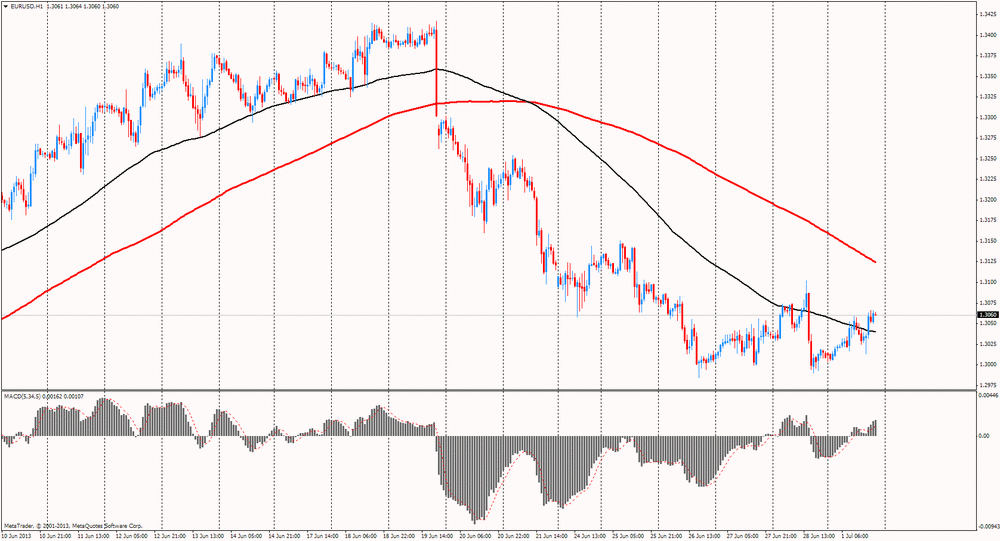- American focus: the euro exchange rate against the dollar has increased markedly
Market news
American focus: the euro exchange rate against the dollar has increased markedly
The euro rose against the U.S. dollar, which has helped to statistics from the euro zone. It is learned that the unemployment rate in the euro zone rose to 12.1%. Value of the index in the previous month was revised from 12.2% to 12%. The result was better than the forecasts of experts who expected an increase in unemployment in May to 12.3%. During the month, the number of unemployed increased by 67 million to 19.2 million Youth unemployment was 23.8%.
It was a drop in the unemployment rate in the monetary union's largest economy - Germany - to 5.3% from 5.4%, in France, unemployment remained at 10.4%. Unemployment in Italy reached a record: the end of May of this year rose to 12.2%.
The maximum level of unemployment in the eurozone was recorded in Spain: 26.9% compared to 26.8% in April.
We also add that the euro zone manufacturing PMI Italy and Spain increased substantially. Both countries have shown the best results, rather than Germany, which confirms the view of the slowing of the recession in Spain and Italy, and the stabilization of the euro zone as a whole in Q2
Note that to stop the euro did not help even the U.S. data. A report published by the Institute for Supply Management (ISM), showed that in June manufacturing activity in the U.S. rose more than expected economists after unexpectedly fell in May for the first time since November 2012.
The PMI for the manufacturing sector in the United States June rose to 50.9 against 49.0 in May. A reading above 50 indicates expansion of industrial activity. Growth has exceeded the expectations of economists, who had forecast an increase to 50.6.
The pound traded slightly higher against the U.S. dollar, although it lost most of the items collected in the course of the day. Note that the dynamics of today's trading was influenced by data that showed that the pace of growth in the UK manufacturing sector accelerated in June, indicating that the economic recovery is gaining momentum. This comes at a time when Mark Carney started to perform as Governor of the Bank of England.
Purchasing Managers Index (PMI) for the manufacturing sector, which is calculated by Markit and the Chartered Institute of Purchasing & Supply, in June rose to 52.5, its highest level since May 2011, against 51.5 in May. Initially it was reported that in May, the index was 51.3.
The data beat expectations of economists who predicted that in June, the index remains at 51.3.
While the details of the report indicate a further improvement of the situation in the sector, as the volume of new orders jumped to its highest level in more than two years, concerns about the longer-term state of the economy remain, as employment growth almost stalled.
The survey showed that demand for British goods to learn a little support from overseas orders. In this case, the respondents relied on the confidence, improving the range and more favorable weather.
In addition, the report of the Bank of England showed that the number of mortgage approvals in the UK in May rose to 58,242 from 54,354 in April. This is the highest monthly figure since December 2009. At the same time, net lending to individuals fell to £ 1 billion against the forecast of £ 1,4 billion

